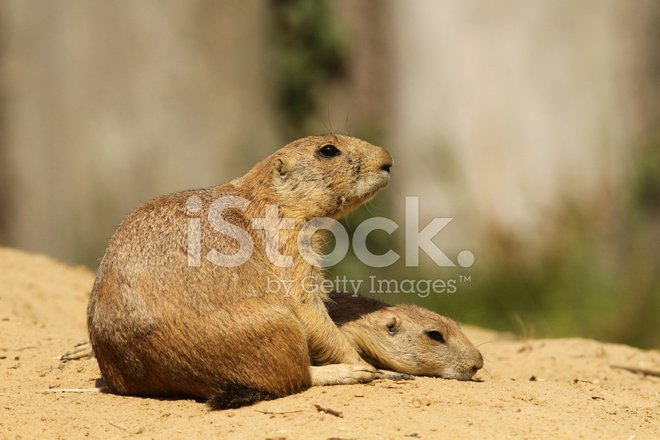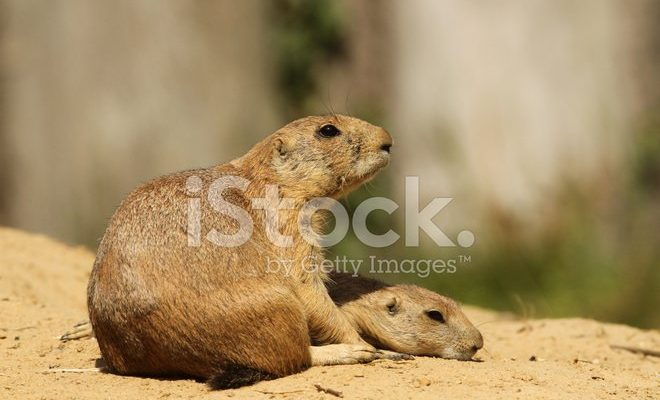
Prairie dogs are often compared to bustling cities, with their burrows acting like apartments in a high-rise. Each family unit, called a “coterie,” is made up of one adult male, several females, and their offspring. The way they raise their young is a real testament to teamwork, showing us just how important community is in the animal world. So, let’s dig deeper into the world of prairie dogs and see how they take care of their little ones.
Prairie Dog Family Structures
Prairie dogs live in family groups known as coteries, which can be quite a lively place. Each coterie usually includes a dominant male, several females, and their young. The males have the important job of guarding the territory, while the females do most of the nurturing.
Coteries can range from just a few members to over fifteen. This group dynamic is essential for raising young because it allows for teamwork in childcare, protection, and foraging. When there’s danger, like a hawk swooping down, the adults work together to alert each other and protect the pups.
The social nature of prairie dogs means they learn not just from their parents but from the entire group. Young prairie dogs will often play with each other, mimicking adult behaviors, which is crucial for their development.
The Role of Mothers
Mother prairie dogs are the primary caretakers of their young. After a gestation period of about 30 days, they give birth to litters ranging from one to eight pups. The mothers are very attentive, nursing the babies for about six to eight weeks, during which time they provide all the nutrition they need.
You might think that caring for so many pups would be overwhelming, but prairie dog mothers actually have a clever way to manage this. They keep their young in a designated area within the burrow while going out to forage for food. They return frequently to nurse and check on them, ensuring that the little ones are safe and sound.
Interestingly, the mothers will often share nursing duties. If one mother is late returning, another might step in to feed the pups. This communal care helps build a stronger bond within the coterie and ensures the survival of more pups.
Pup Development Stages
The development of prairie dog pups can be broken down into several stages. Right after birth, they’re completely helpless, weighing less than an ounce, and are born blind and hairless. Their mother keeps them safe in the burrow, away from potential threats.
After about two weeks, the pups start to open their eyes and grow a soft coat of fur. This is a crucial time for their social development. Around three weeks old, they start to explore just outside the burrow entrance. You can often see little heads popping out, looking around, and even engaging in playful wrestling fights with their siblings.
By the end of the summer, the pups are almost fully grown and ready to join the larger community in foraging for food. They learn essential skills, like identifying predators and finding food, mainly through observing their parents and other adults in their group.
Social Learning and Play
Play is a huge part of prairie dog life. You might be surprised to learn that it’s not just for fun—it’s critical for survival. Young prairie dogs learn important social skills and survival tactics through play and imitation.
When pups wrestle and chase each other, they’re not only having a blast; they’re practicing skills they’ll need as adults. These playful interactions teach them how to react to danger and assert themselves in social situations. It’s like a mini boot camp for prairie dogs!
The adults also use vocalizations, called “barks” and “chatter,” to communicate. Young prairie dogs pay close attention to these sounds, learning to recognize the specific calls that signal danger, food availability, or even when it’s time to leave the burrow. This early training is vital for their future success in the wild.
Challenges in Raising Young
Despite all the love and care, prairie dogs face many challenges in raising their young. Predators like coyotes, hawks, and even domestic pets can pose a significant threat. The coterie works as a team to fend off these dangers, but not every pup makes it to adulthood.
Another challenge comes from habitat loss due to agriculture and urban development. When their burrows are destroyed, the entire population can be disrupted. This not only affects their survival but also impacts the social structures that are crucial for nurturing young prairie dogs.
The prairie dog’s future depends on conservation efforts to protect their habitats. Ranches and protected areas can help ensure they have safe places to thrive and raise their families.
The Importance of Community
At the heart of how prairie dogs raise their young is the idea of community. Their entire survival strategy hinges on teamwork, from foraging for food to protecting the young pups. This makes them a great example of how cooperation can benefit a species.
Every member of the coterie plays a role, whether it’s foraging for food or alerting others of danger. When one prairie dog spots a predator, it makes a distinctive call to warn the others, allowing everyone to take cover. This communal behavior not only protects the pups but strengthens the bonds within the group.
So, next time you think about prairie dogs, remember that their lives are not just about survival; they’re about connection and community. These little creatures have a lot to teach us about raising families and the importance of looking out for one another.
In conclusion, prairie dogs are not just adorable little animals—they are fascinating creatures with a strong sense of family and community. Their unique ways of raising young showcase the importance of teamwork and social learning in the animal kingdom. Understanding their lives gives us a deeper appreciation for these remarkable animals and their role in our ecosystem.

